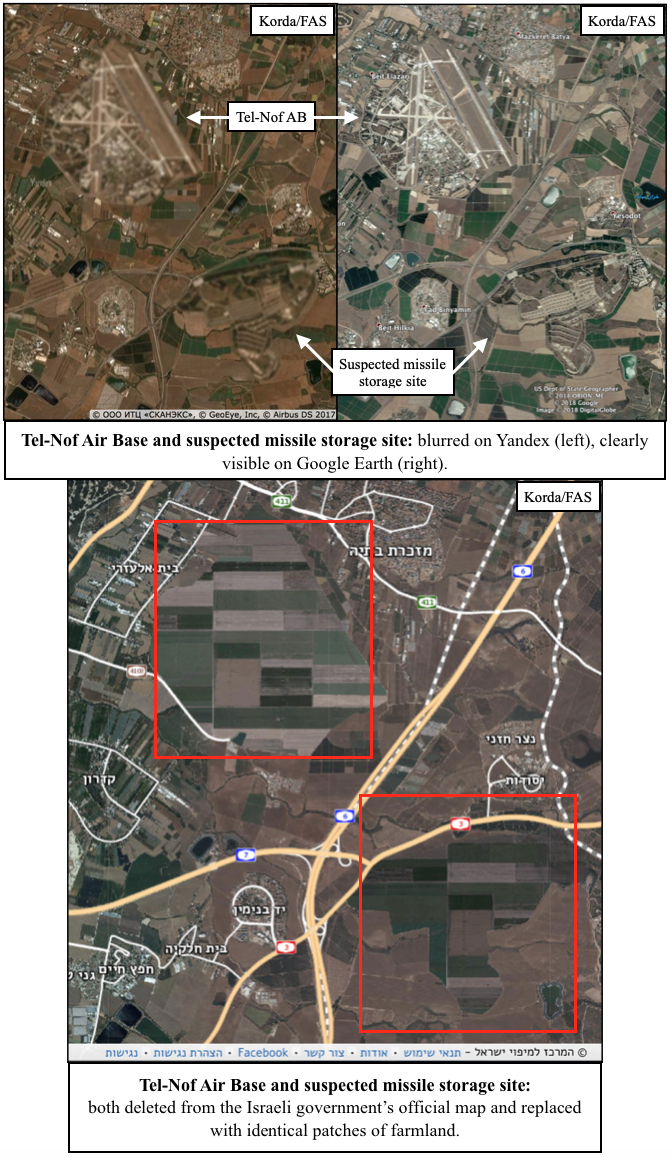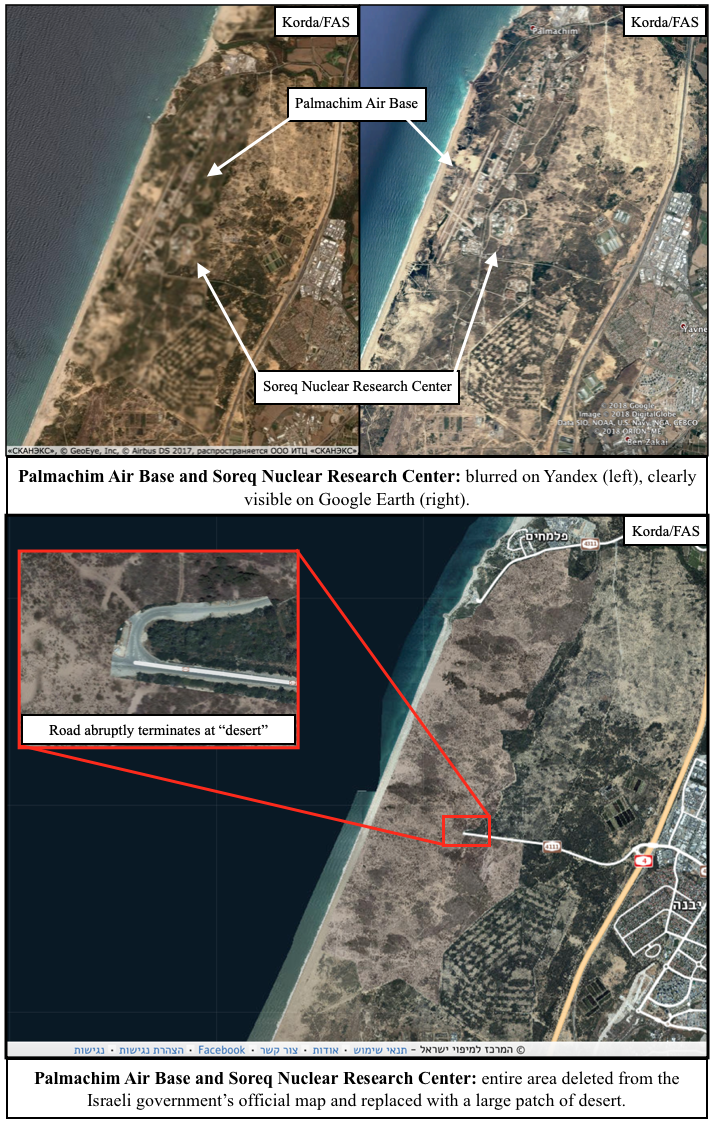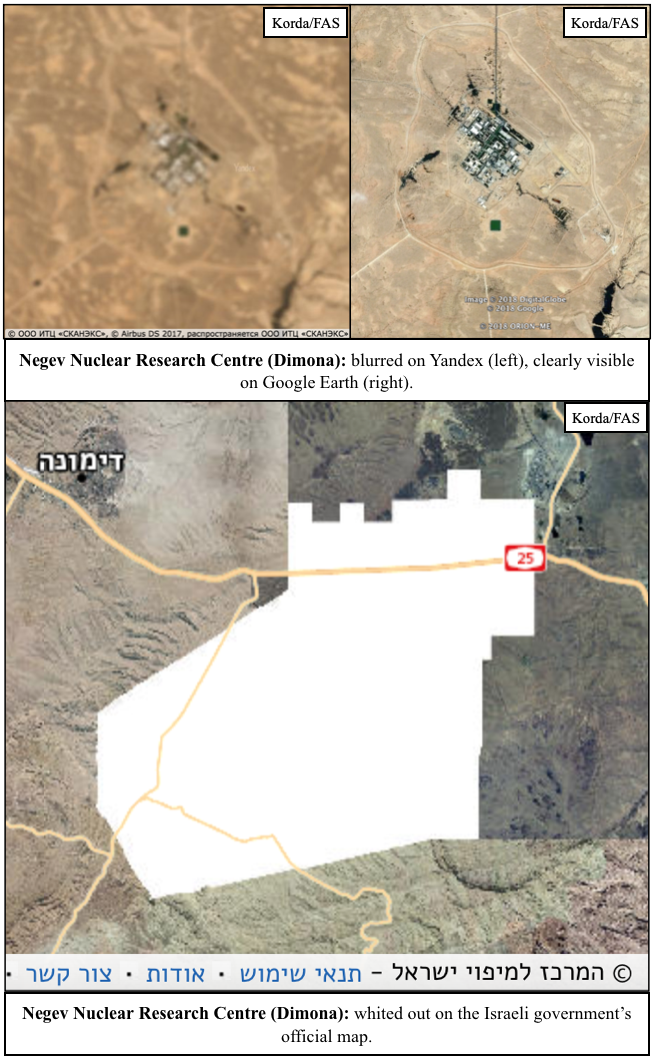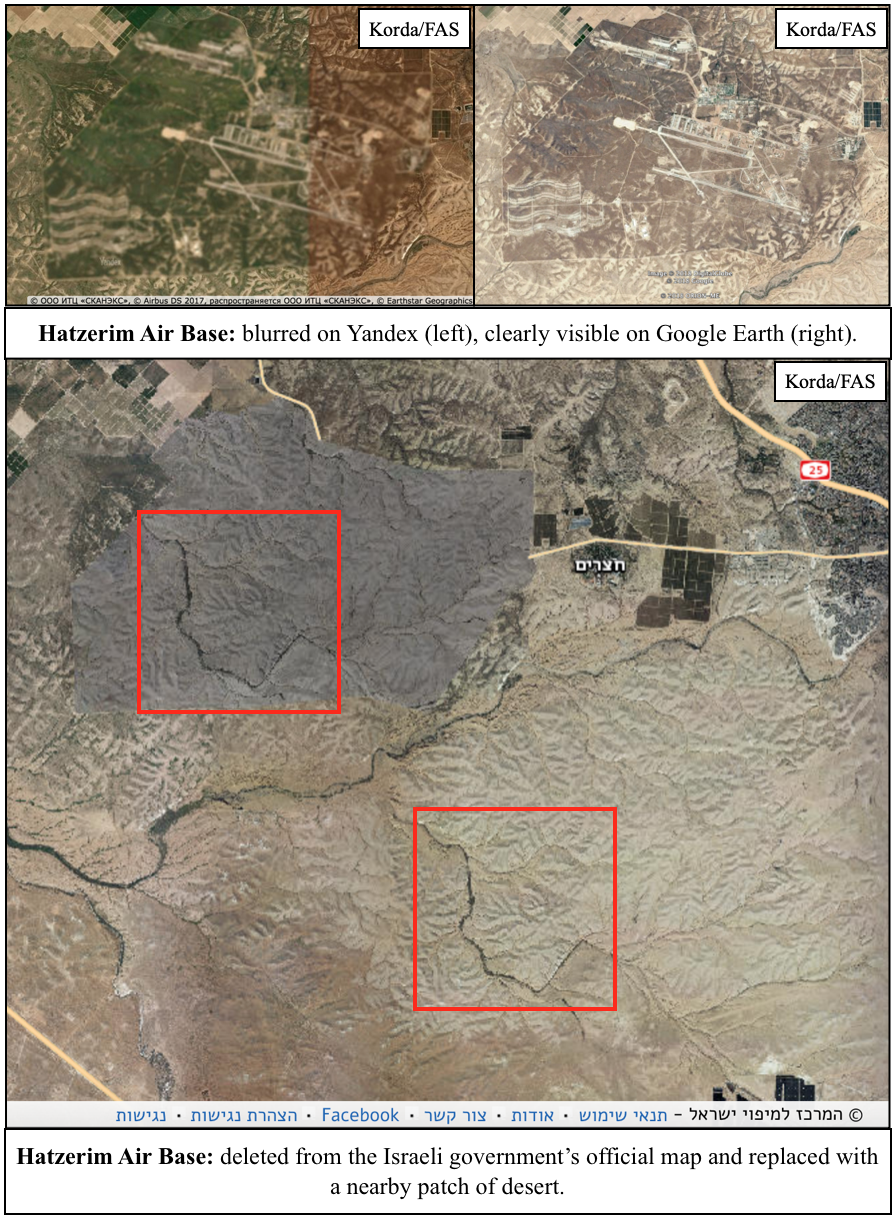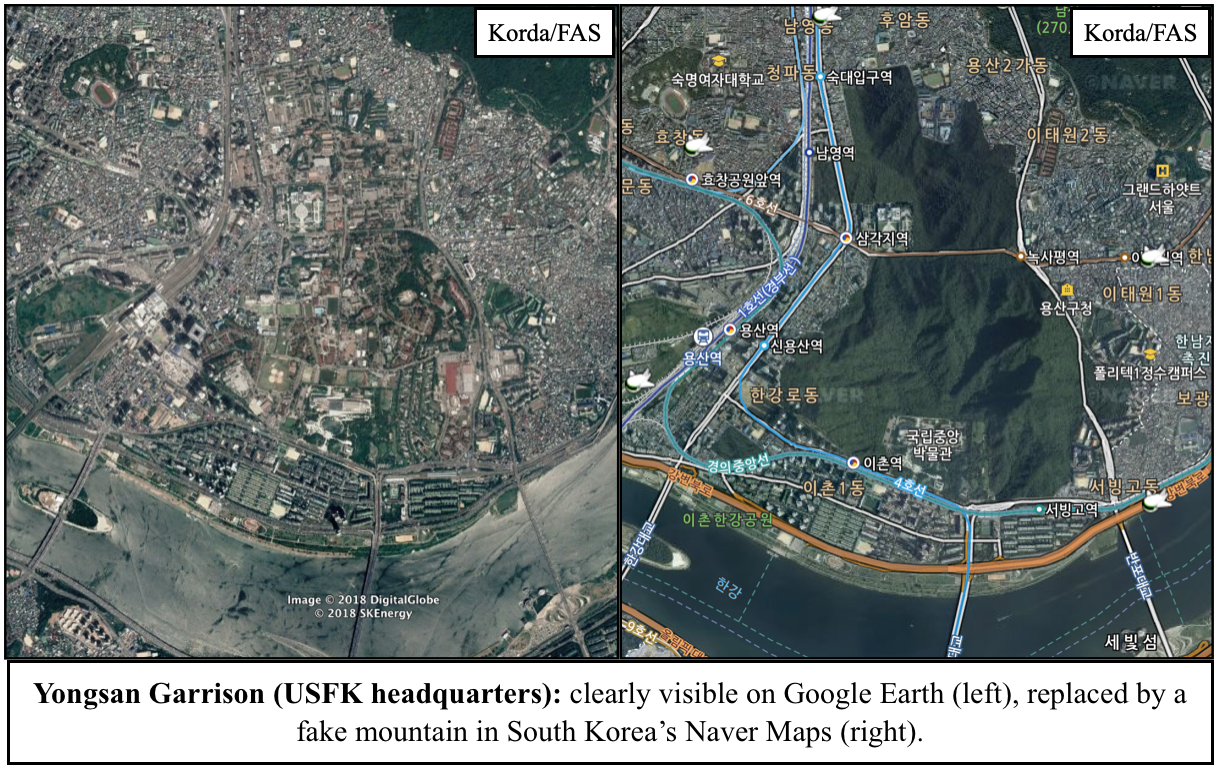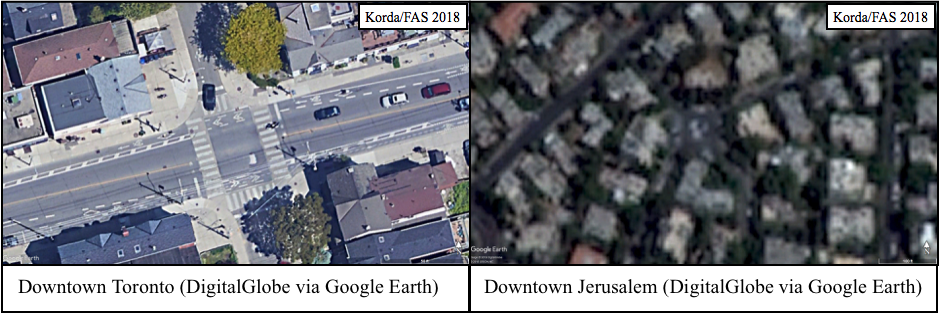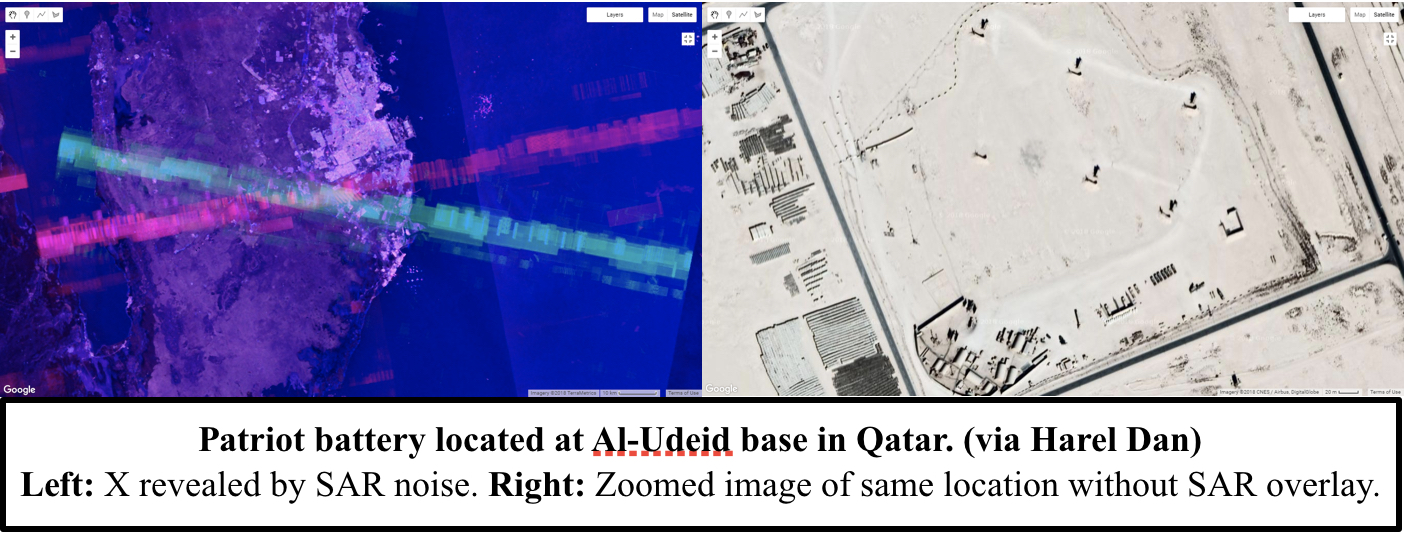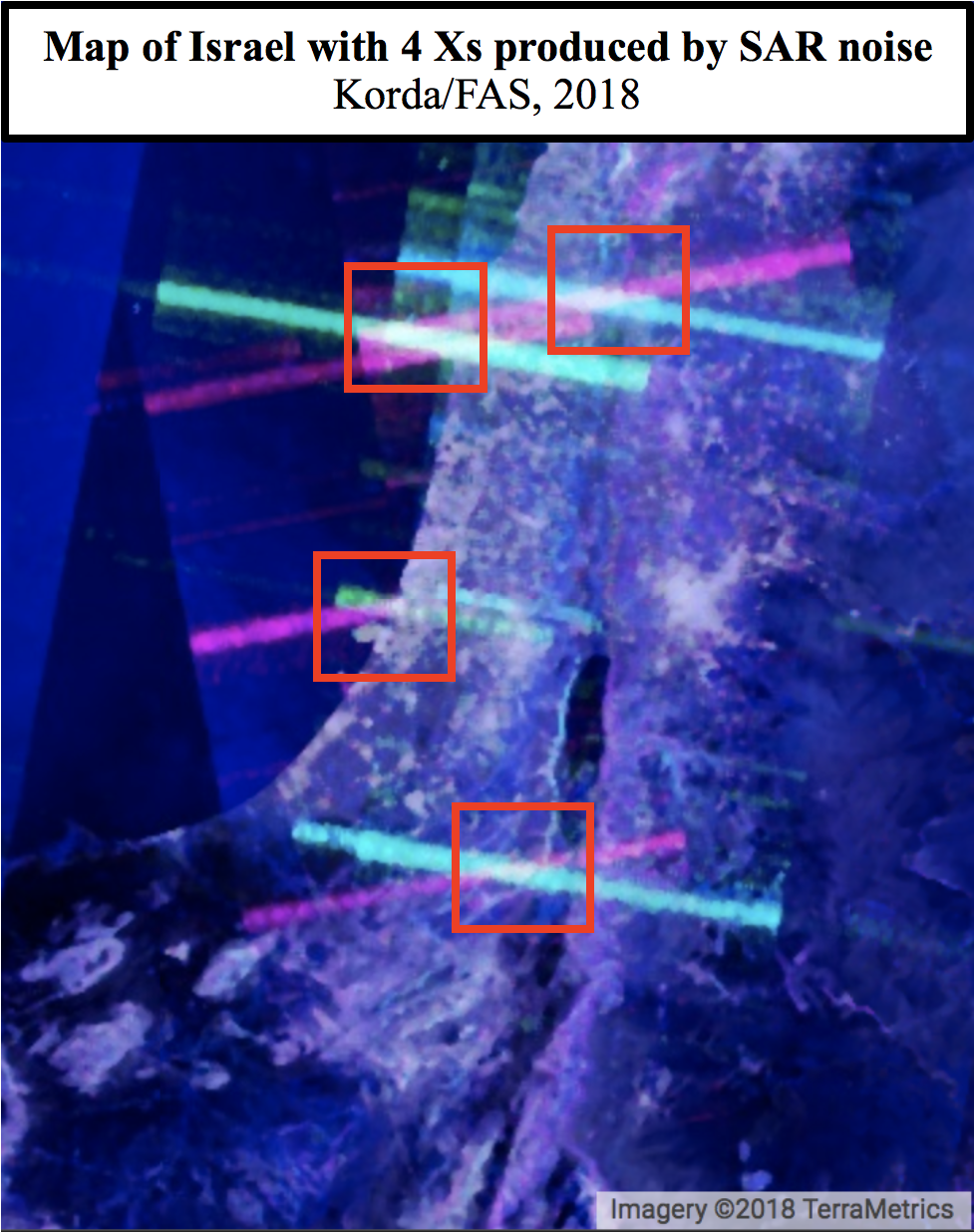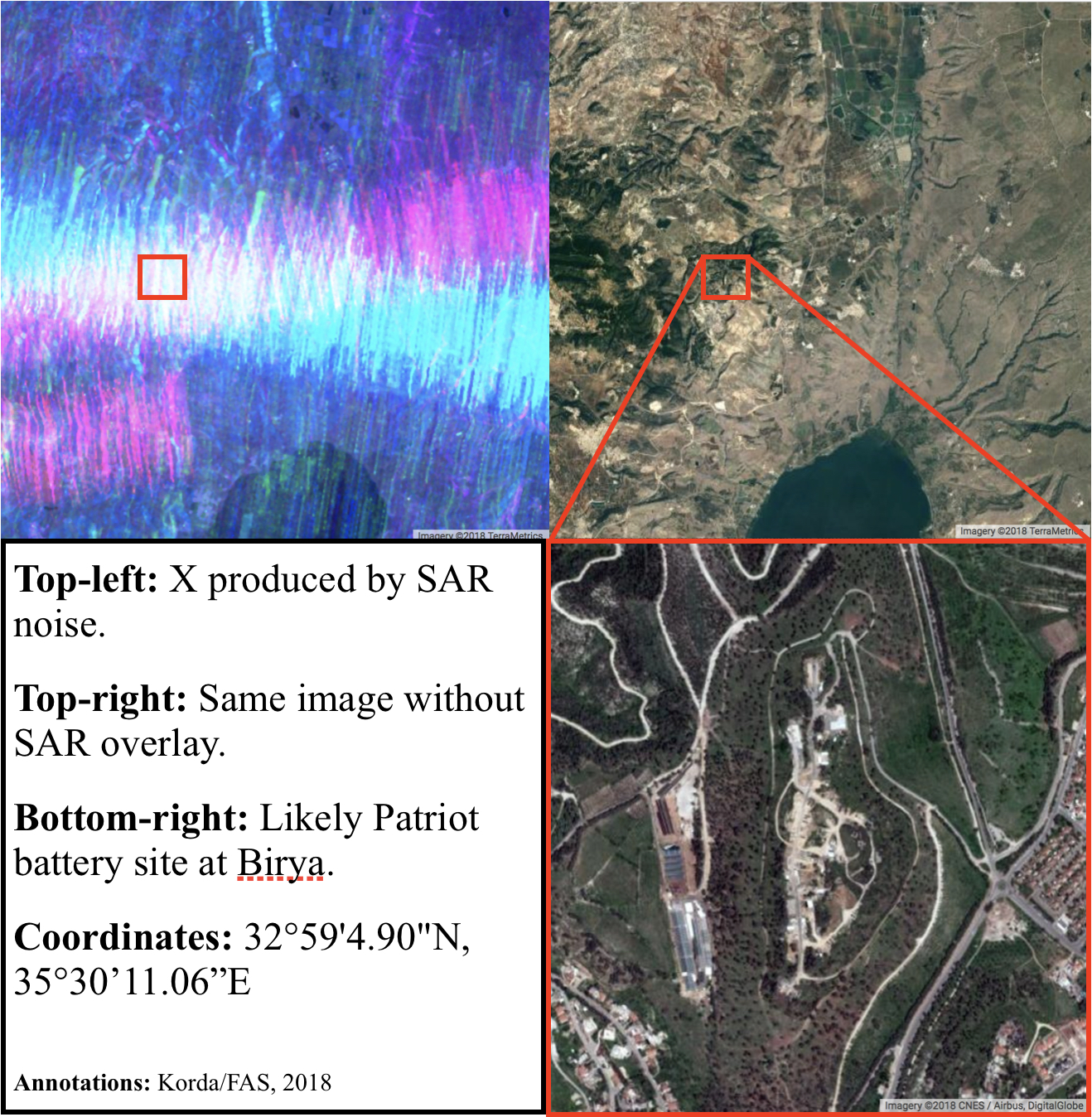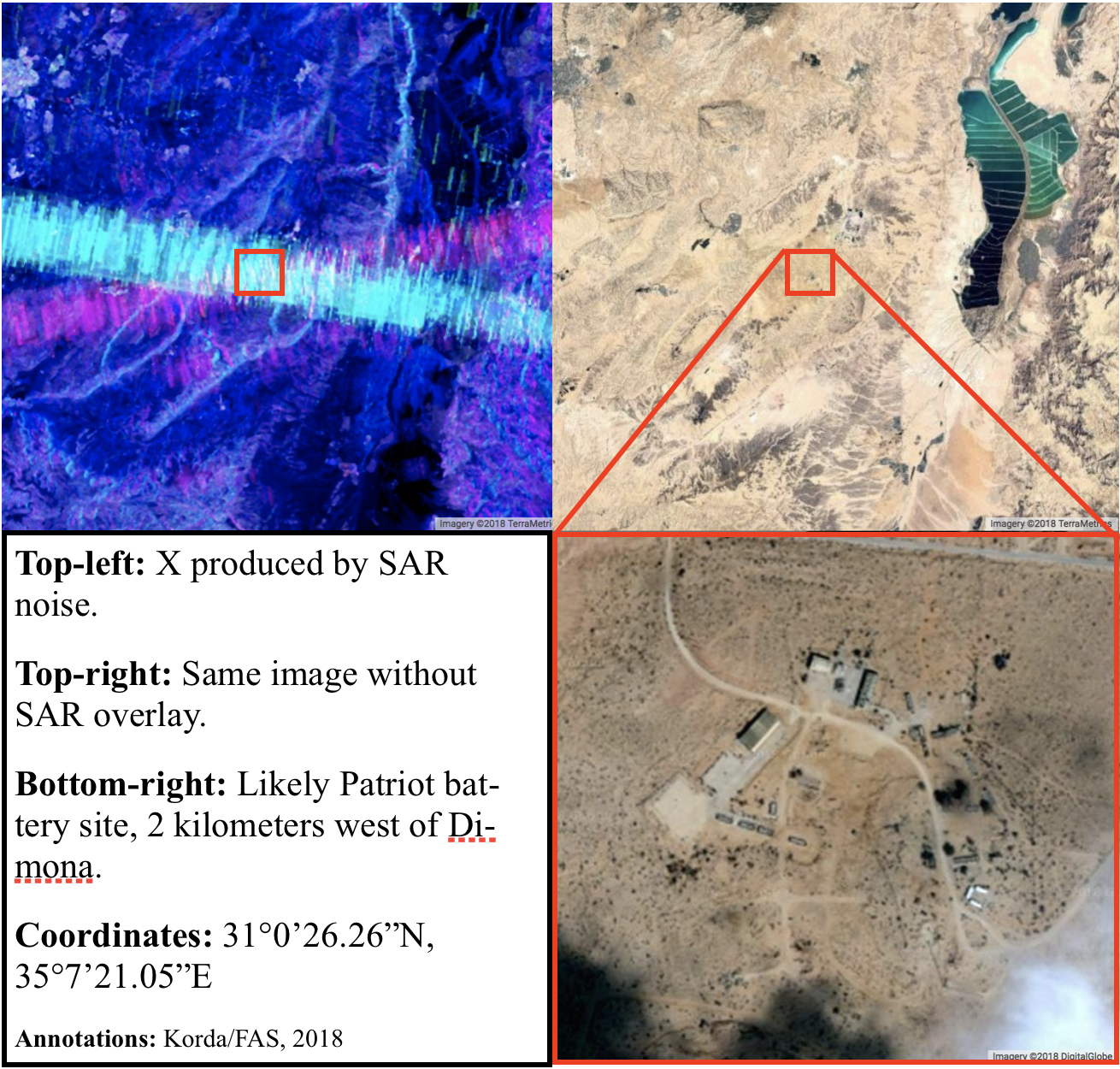Planning for the Unthinkable: The targeting strategies of nuclear-armed states
This report was produced with generous support from Norwegian People’s Aid.
The quantitative and qualitative enhancements to global nuclear arsenals in the past decade—particularly China’s nuclear buildup, Russia’s nuclear saber-rattling, and NATO’s response—have recently reinvigorated debates about how nuclear-armed states intend to use their nuclear weapons, and against which targets, in what some describe as a new Cold War.
Details about who, what, where, when, why, and how countries target with their nuclear weapons are some of states’ most closely held secrets. Targeting information rarely reaches the public, and discussions almost exclusively take place behind closed doors—either in the depths of military headquarters and command posts, or in the halls of defense contractors and think tanks. The general public is, to a significant extent, excluded from those discussions. This is largely because nuclear weapons create unique expectations and requirements about secrecy and privileged access that, at times, can seem borderline undemocratic. Revealing targeting information could open up a country’s nuclear policies and intentions to intense scrutiny by its adversaries, its allies, and—crucially—its citizens.
This presents a significant democratic challenge for nuclear-armed countries and the international community. Despite the profound implications for national and international security, the intense secrecy means that most individuals—not only including the citizens of nuclear-armed countries and others that would bear the consequences of nuclear use, but also lawmakers in nuclear-armed and nuclear umbrella states that vote on nuclear weapons programs and policies—do not have much understanding of how countries make fateful decisions about what to target during wartime, and how. When lawmakers in nuclear-armed countries approve military spending bills that enhance or increase nuclear and conventional forces, they often do so with little knowledge of how those bills could have implications for nuclear targeting plans. And individuals across the globe do not know whether they live in places that are likely to be nuclear targets, or what the consequences of a nuclear war would be.
While it is reasonable for governments to keep the most sensitive aspects of nuclear policies secret, the rights of their citizens to have access to general knowledge about these issues is equally valid so they may know about the consequences to themselves and their country, and so that they can make informed assessments and decisions about their respective government’s nuclear policies. Under ideal conditions, individuals should reasonably be able to know whether their cities or nearby military bases are nuclear targets and whether their government’s policies make it more or less likely that nuclear weapons will be used.
As an organization that seeks to empower individuals, lawmakers, and journalists with factual information about critical topics that most affect them, the Federation of American Scientists—through this report—aims to help fill some of these significant knowledge gaps. This report illuminates what we know and do not know about each country’s nuclear targeting policies and practices, and considers how they are formulated, how they have changed in recent decades, whether allies play a role in influencing them, and why some countries are more open about their policies than others. The report does not claim to be comprehensive or complete, but rather should be considered as a primer to help inform the public, policymakers, and other stakeholders. This report may be updated as more information becomes available.
Given the secrecy associated with nuclear targeting information, it is important at the outset to acknowledge the limitations of using exclusively open sources to conduct analysis on this topic. Information in and about different nuclear-armed states varies significantly. For countries like the United States—where nuclear targeting policies have been publicly described and are regularly debated inside and outside of government among subject matter experts—official sources can be used to obtain a basic understanding of how nuclear targets are nominated, vetted, and ultimately selected, as well as how targeting fits into the military strategy. However, there is very little publicly available information about the nuclear strike plans themselves or the specific methodology and assumptions that underpin them. For less transparent countries like Russia and China—where targeting strategy and plans are rarely discussed in public—media sources, third-country intelligence estimates, and nuclear force structure analysis can be used, in conjunction with official statements or statements from retired officials, to make educated assumptions about targeting policies and strategies.
It is important to note that a country’s relative level of transparency regarding its nuclear targeting policies does not necessarily echo its level of transparency regarding other aspects of its governance structure. Ironically, some of the most secretive and authoritarian nuclear-armed states are remarkably vocal about what they would target in a nuclear war. This is typically because those same countries use nuclear rhetoric as a means to communicate deterrence signals to their respective adversaries and to demonstrate to their own population that they are standing up to foreign threats. For example, while North Korea keeps many aspects of its nuclear program secret, it has occasionally stated precisely which high-profile targets in South Korea and across the Indo-Pacific region it would strike with nuclear weapons. In contrast, some other countries might consider that frequently issuing nuclear threats or openly discussing targeting policies could potentially undermine their strategic deterrent and even lower the threshold for nuclear use.
Israel’s Official Map Replaces Military Bases with Fake Farms and Deserts
Somewhat unexpectedly, a blog post that I wrote last week caught fire internationally. On Monday, I reported that Yandex Maps—Russia’s equivalent to Google Maps—had inadvertently revealed over 300 military and political facilities in Turkey and Israel by attempting to blur them out.
In a strange turn of events, the fallout from that story has actually produced a whole new one.
After the story blew up, Yandex pointed out that its efforts to obscure these sites are consistent with its requirement to comply with local regulations. Yandex’s statement also notes that “our mapping product in Israel conforms to the national public map published by the government of Israel as it pertains to the blurring of military assets and locations.”
The “national public map” to which Yandex refers is the official online map of Israel which is maintained by the Israeli Mapping Centre (מרכז למיפוי ישראל) within the Israeli government. Since Yandex claims to take its cue from this map, I wondered whether that meant that the Israeli government was also selectively obscuring sites on its national map.
I wasn’t wrong. In fact, the Israeli government goes well beyond just blurring things out. They’re actually deleting entire facilities from the map—and quite messily, at that. Usually, these sites are replaced with patches of fake farmland or desert, but sometimes they’re simply painted over with white or black splotches.
Some of the more obvious examples of Israeli censorship include nuclear facilities:
- Tel-Nof Air Base is just down the road from a suspected missile storage site, both of which have been painted over with identical patches of farmland.
- Palmachim Air Base doubles as a test launch site for Jericho missiles and is collocated with the Soreq Nuclear Research Center, which is rumoured to be responsible for nuclear weapons research and design. The entire area has been replaced with a fake desert.
- The Haifa Naval Base includes pens for submarines that are rumoured to be nuclear-capable, and is entirely blacked out on the official map.
- The Negev Nuclear Research Center at Dimona is responsible for plutonium and tritium production for Israel’s nuclear weapons program, and has been entirely whited out on the official map.
- Hatzerim Air Base has no known connection to Israel’s nuclear weapons program; however, the sloppy method that was used to mask its existence (by basically just copy-pasting a highly-distinctive and differently-coloured patch of desert to an area only five kilometres away) was too good to leave out.
Given that all of these locations are easily visible through Google Earth and other mapping platforms, Israel’s official map is a prime example of needless censorship. But Israel isn’t the only one guilty of silly secrecy: South Korea’s Naver Maps regularly paints over sensitive sites with fake mountains or digital trees, and in a particularly egregious case, the Belgian Ministry of Defense is actually suing Google for not complying with its requests to blur out its military facilities.
Before the proliferation of high-resolution satellite imagery, obscuring aerial photos of military facilities was certainly an effective method for states to safeguard their sensitive data. However, now that anyone with an internet connection can freely access these images, it simply makes no sense to persist with these unnecessary censorship practices–especially since these methods can often backfire and draw attention to the exact sites that they’re supposed to be hiding.
Case studies like Yandex and Strava—in which the locations of secret military facilities were revealed through the publication of fitness heat-maps—should prompt governments to recognize that their data is becoming increasingly accessible through open-source methods. Correspondingly, they should take the relevant steps to secure information that is absolutely critical to national security, and be much more publicly transparent with information that is not—hopefully doing away with needless censorship in the process.
Widespread Blurring of Satellite Images Reveals Secret Facilities
Want to know how to make a satellite imagery analyst instantly curious about something?
Blur it out.
Google Earth occasionally does this at the request of governments that want to keep prying eyes away from some of their more sensitive military or political sites. France, for example, has asked Google to obscure all imagery of its prisons after a French gangster successfully conducted a Hollywood-inspired jailbreak involving drones, smoke bombs, and a stolen helicopter(!)—and Google has agreed to comply by the end of 2018. In similar fashion, an old Dutch law requires Dutch companies to blur their satellite images of military and royal facilities—even to the point where a satellite imagery provider once doctored an image of Volkel Air Base after it was purchased by FAS’ very own Hans Kristensen.
Yandex Maps—Russia’s foremost mapping service—has also agreed to selectively blur out specific sites beyond recognition; however, it has done so for just two countries: Israel and Turkey. The areas of these blurred sites range from large complexes—such as airfields or munitions storage bunkers—to small, nondescript buildings within city blocks.
Although blurring out specific sites is certainly unusual, it is not uncommon for satellite imagery companies to downgrade the resolution of certain sets of imagery before releasing them to viewing platforms like Yandex or Google Earth; in fact, if you trawl around the globe using these platforms, you’ll notice that different locations will be rendered in a variety of resolutions. Downtown Toronto, for example, is always visible at an extremely high resolution; looking closely, you can spot my bike parked outside my old apartment. By contrast, imagery of downtown Jerusalem is always significantly blurrier; you can just barely make out cars parked on the side of the road.
As I explained in my previous piece about geolocating Israeli Patriot batteries, a 1997 US law known as the Kyl-Bingaman Amendment (KBA) prohibits US companies from publishing satellite imagery of Israel at a Ground Sampling Distance lower than what is commercially available. This generally means that US-based satellite companies like DigitalGlobe and viewing platforms like Google Earth won’t publish any images of Israel that are better than 2m resolution.
Foreign mapping services like Russia’s Yandex are legally not subject to the KBA, but they tend to stick to the 2m resolution rule regardless, likely for two reasons. Firstly, after 20 years the KBA standard has become somewhat institutionalized within the satellite imagery industry. And secondly, Russian companies (and the Russian state) are surely wary of doing anything to sour Russia’s critical relationship with Israel.
However, Yandex has taken a step well beyond simply downgrading its Israeli imagery, as is typical for most mapping services. Yandex itself—or perhaps its imagery provider ScanEx—has blurred out specific military installations in their entirety. Interestingly, it has done the same to Turkey, a country that benefits from no special standards and is therefore almost always shown in very high resolution.
This blurring is almost certainly the result of requests from both Israel and Turkey; it seems highly unlikely that a Russian company would undertake such a time-consuming task of its own volition. Fortunately (from an OSINT perspective), this has had the unintended effect of revealing the location and exact perimeter of every significant military facility within both countries, if one is obsessive curious enough to sift through the entire map looking for blurry patches. Matching the blurred sites to un-blurred (albeit downgraded) imagery available through Google Earth is a method of “tipping and cueing,” in which one dataset is used to inform a more detailed analysis of a second dataset.
My complete list of blurred sites in both Israel and Turkey totals over 300 distinct buildings, airfields, ports, bunkers, storage sites, bases, barracks, nuclear facilities, and random buildings—prompting several intriguing points of consideration:
- Included in the list of Yandex’s blurred sites are at least two NATO facilities: Allied Land Command (LANDCOM) in Izmir, and Incirlik Air Base, which hosts the largest contingent of US B61 nuclear gravity bombs at any single NATO base.
- Strangely, no Russian facilities have been blurred—including its nuclear facilities, submarine bases, air bases, launch sites, or numerous foreign military bases in Eastern Europe, Central Asia, or the Middle East.
- Although none of Russia’s permanent military installations in Syria have been blurred, almost the entirety of Syria is depicted in extremely low resolution, making it nearly impossible to utilize Yandex for analyses of Syrian imagery. By contrast, both Crimea and the entire Donbass region are visible at very high resolutions, so this blurring standard applies only selectively to Russia’s foreign adventures.
- All four Israeli Patriot batteries that I identified using radar interference in my previous post have been blurred out, confirming that these sites do indeed have a military function.
Putting aside the geopolitical intrigue of Russia’s relations with both Israel and Turkey, Yandex’s actions are a prime example of what is known as the Streisand Effect. In 2003, Barbra Streisand attempted to sue a photographer who posted photos of her Malibu mansion online, claiming $10 million in damages and demanding that the innocuous photo be taken down. Her actions completely backfired: not only did Streisand lose the case and have to cover the defendant’s legal fees, but the attention raised by her lawsuit directed significant traffic to the photo in question. Before the lawsuit, the photo had only been viewed six times (including twice by Streisand’s lawyers); a month later, the photo had accumulated over 420,000 views—a prime example of how attempting to obscure something is actually likely to result in unwanted attention.
So too with Yandex. By complying with requests to selectively obscure military facilities, the mapping service has actually revealed their precise locations, perimeters, and potential function to anyone curious enough to find them all.
An X reveals a Diamond: locating Israeli Patriot batteries using radar interference
Amid a busy few weeks of nuclear-related news, an Israeli researcher made a very surprising OSINT discovery that flew somewhat under the radar. As explained in a Medium article, Israeli GIS analyst Harel Dan noticed that when he accidentally adjusted the noise levels of the imagery produced from the SENTINEL-1 satellite constellation, a bunch of colored Xs suddenly appeared all over the globe.
SENTINEL-1’s C-band Synthetic Aperture Radar (SAR) operates at a centre frequency of 5.405 GHz, which conveniently sits within the range of the military frequency used for land, airborne, and naval radar systems (5.250-5.850 GHz)—including the AN/MPQ-53/65 phased array radars that form the backbone of a Patriot battery’s command and control system. Therefore, Harel correctly hypothesized that some of the Xs that appeared in the SENTINEL-1 images could be triggered by interference from Patriot radar systems.
Using this logic, he was able to use the Xs to pinpoint the locations of Patriot batteries in several Middle Eastern countries, including Qatar, Bahrain, Jordan, Kuwait, and Saudi Arabia.
Harel’s blog post also noted that several Xs appeared within Israeli territory; however, the corresponding image was redacted (I’ll leave you to guess why), leaving a gap in his survey of Patriot batteries stationed in the Middle East.
This blog post partially fills that gap, while acknowledging that there are some known Patriot sites—both in Israel and elsewhere around the globe—that interestingly don’t produce an X via the SAR imagery.
All of these sites were already known to Israel-watchers and many have appeared in news articles, making Harel’s redaction somewhat unnecessary—especially since the images reveal nothing about operational status or system capabilities.
Looking at the map of Israel through the SENTINEL-1 SAR images, four Xs are clearly visible: one in the Upper Galilee, one in Haifa, one near Tel Aviv, and one in the Negev. All of these Xs correspond to likely Patriot battery sites, which are known in Israel as “Yahalom” (יהלום, meaning “Diamond”) batteries. Let’s go from north to south.
The northernmost site is home to the 138th Battalion’s Yahalom battery at Birya, which made news in July 2018 for successfully intercepting a Syrian Su-24 jet which had reportedly infiltrated two kilometers into Israeli airspace before being shot down. Earlier that month, the Birya battery also successfully intercepted a Syrian UAV which had flown 10 kilometers into Israeli airspace.
The Yahalom battery in the northwest is based on one of the ridges of Mount Carmel, near Haifa’s Stella Maris Monastery. It is located only 50 meters from a residential neighborhood, which has understandably triggered some resentment from nearby residents who have complained that too much ammunition is stored there and that the air sirens are too loud.
The X in the west indicates the location of a Yahalom site at Palmachim air base, south of Tel Aviv, where Israel conducts its missile and satellite launches. In March 2016, the Israeli Air Force launched interceptors as part of a pre-planned missile defense drill, and while the government refused to divulge the location of the battery, an Israeli TV channel reported that the drill was conducted using Patriot missiles fired from Palmachim air base.
Finally, the X in the southeast sits right on top of the Negev Nuclear Research Centre, more commonly known as Dimona. This is the primary facility relating to Israel’s nuclear weapons program and is responsible for plutonium and tritium production. The site is known to be heavily fortified; during the Six Day War, an Israeli fighter jet that had accidentally flown into Dimona’s airspace was shot down by Israeli air defenses and the pilot was killed.
The proximity of the Negev air defense battery to an Israeli nuclear facility is not unique. In fact, the 2002 SIPRI Yearbook suggests that several of the Yahalom batteries identified through SENTINEL-1 SAR imagery are either co-located with or located close to facilities related to Israel’s nuclear weapons program. The Palmachim site is near the Soreq Centre, which is responsible for nuclear weapons research and design, and the Mount Carmel site is near the Yodefat Rafael facility in Haifa—which is associated with the production of Jericho missiles and the assembly of nuclear weapons—and near the base for Israel’s Dolphin-class submarines, which are rumored to be nuclear-capable.
Google Earth’s images of Israel have been intentionally blurred since 1997, due to a US law known as the Kyl-Bingaman Amendment which prohibits US satellite imagery companies from selling pictures that are “no more detailed or precise than satellite imagery of Israel that is available from commercial sources.” As a result, it is not easy to locate the exact position of the Yahalom batteries; for example, given the number of facilities and the quality of the imagery, the site at Palmachim is particularly challenging to spot.
However, this law is actually being revisited this year and could soon be overturned, which would be a massive boon for Israel-watchers. Until that happens though, Israel will remain blurry and difficult to analyze, making creative OSINT techniques like Harel’s all the more useful.
—–
Sentinel-1 data from 2014 onwards is free to access via Google Earth Engine here, and Harel’s dataset is available here.
Nuclear Transparency and the Stockpile Stewardship and Management Plan
 By Hans M. Kristensen
By Hans M. Kristensen
I was reading through the latest Stockpile Stewardship and Management Plan from the National Nuclear Security Administration (NNSA) and wondering what I should pick to critique the Obama administration’s nuclear policy.
After all, there are plenty of issues that deserve to be addressed, including:
– Why NNSA continues to overspend and over-commit and create a spending bow wave in 2021-2026 in excess of the President’s budget in exactly the same time period that excessive Air Force and Navy modernization programs are expected to put the greatest pressure on defense spending?
– Why a smaller and smaller nuclear weapons stockpile with fewer warhead types appears to be getting more and more expensive to maintain?
– Why each warhead life-extension program is getting ever more ambitious and expensive with no apparent end in sight?
– And why a policy of reductions, no new nuclear weapons, no pursuit of new military missions or new capabilities for nuclear weapons, restraint, a pledge to “put an end to Cold War thinking,” and the goal of disarmament, instead became a blueprint for nuclear overreach with record funding, across-the-board modernizations, unprecedented warhead modifications, increasing weapons accuracy and effectiveness, reaffirmation of a Triad and non-strategic nuclear weapons, continuation of counterforce strategy, reaffirmation of the importance and salience of nuclear weapons, and an open-ended commitment to retain nuclear weapons further into the future than they have existed so far?
What About The Other Nuclear-Armed States?
Despite the contradictions and flaws of the administration’s nuclear policy, however, imagine if the other nuclear-armed states also published summaries of their nuclear weapons plans. Some do disclose a little, but they could do much more. For others, however, the thought of disclosing any information about the size and composition of their nuclear arsenal seems so alien that it is almost inconceivable.
Yet that is actually one of the reasons why it is necessary to continue to work for greater (or sufficient) transparency in nuclear forces. Some nuclear-armed states believe their security depends on complete or near-compete nuclear secrecy. And, of course, some nuclear information must be protected from disclosure. But the problem with excessive secrecy is that it tends to fuel uncertainty, rumors, suspicion, exaggerations, mistrust, and worst-case assumptions in other nuclear-armed states – reactions that cause them to shape their own nuclear forces and strategies in ways that undermine security for all.
Nuclear-armed states must find a balance between legitimate secrecy and transparency. This can take a long time and it may not necessarily be the same from country to country. The United States also used to keep much more nuclear information secret and there are many institutions that will always resist public access. But maximum responsible disclosure, it turns out, is not only necessary for a healthy public debate about nuclear policy, it is also necessary to communicate to allies and adversaries what that policy is about – and, equally important, to dispel rumors and misunderstandings about what the policy is not.
Nuclear transparency is not just about pleasing the arms controllers – it is important for national security.
So here are some thoughts about what other nuclear-armed states should (or could) disclose about their nuclear arsenals – not to disclose everything but to improve communication about the role of nuclear weapons and avoid misunderstandings and counterproductive surprises:
 Russia should publish:
Russia should publish:
– Full New START aggregate data numbers (these numbers are already shared with the United States, that publishes its own numbers)
– Size and history of overall nuclear weapons stockpile
– Number of history of nuclear warhead dismantlement (has made statements about percentage reductions since 1991 but not disclosed numbers or history)
– Basic overview of which nuclear forces are nuclear-capable (has made some statements about strategic forces but not shorter-range forces)
– Plans for future years force levels of long-range nuclear forces (has made occasional statements about modernizations but no detailed plan)
– Overall status and out-year budgets for nuclear weapons and nuclear forces
 China should publish:
China should publish:
– Size and history of overall nuclear weapons stockpile (stated in 2004 that it possessed the smallest arsenal of the nuclear weapon states but has not disclosed numbers or history)
– Basic overview of its nuclear-capable forces
– Plans for future years force levels of long-range nuclear forces
– Overall status and out-year budgets for nuclear weapons and nuclear forces
 France should publish:
France should publish:
– History of overall nuclear weapons stockpile (has disclosed the size of its nuclear stockpile in 2008 and 2015 (300 weapons), but not the history)
– Number and history of nuclear warhead dismantlement (has declared dismantlement of some types but not history)
(France has disclosed its overall force structure and some nuclear budget information is published each year.)
 Britain should publish:
Britain should publish:
– History of overall nuclear weapons stockpile (has declared some approximate historic numbers, declared the approximate size in 2010 (no more than 225), and has declared plan for mid-2020s (no more than 180), but has not disclosed history)
– Number and history of nuclear warhead dismantlement (has announced dismantlement of systems but not numbers or history)
(Britain has published information about the size of its nuclear force structure and part of its nuclear budget.)
 Pakistan should publish:
Pakistan should publish:
– History of overall nuclear weapons stockpile
– Basic overview of nuclear-capable forces (occasionally declares that a missile test involves nuclear-capable weapon)
– Plans for future years force levels of longer-range nuclear forces
– Overall status and out-year budgets for nuclear weapons and nuclear forces
 India should publish:
India should publish:
– History of overall nuclear weapons stockpile
– Basic overview of nuclear-capable forces (occasionally declares that a missile test involves nuclear-capable weapon)
– Plans for future years force levels of longer-range nuclear forces
– Overall status and out-year budgets for nuclear weapons and nuclear forces
 Israel should publish:
Israel should publish:
…or should it? Unlike other nuclear-armed states, Israel has not publicly confirmed it has a nuclear arsenal and has said it will not be the first to introduce nuclear weapons in the Middle East. Some argue Israel should not confirm or declare anything because of fear it would trigger nuclear arms programs in other Middle Eastern countries.
On the other hand, the existence of the Israeli nuclear arsenal is well known to other countries as has been documented by declassified government documents in the United States. Official confirmation would be politically sensitive but not in itself change national security in the region. Moreover, the secrecy fuels speculations, exaggerations, accusations, and worst-case planning. And it is hard to see how the future of nuclear weapons in the Middle East can be addressed and resolved without some degree of official disclosure.
 North Korea should publish:
North Korea should publish:
Well, obviously this nuclear-armed state is a little different (to put it mildly) because its blustering nuclear threats and statements – and the nature of its leadership itself – make it difficult to trust any official information. Perhaps this is a case where it would be more valuable to hear more about what foreign intelligence agencies know about North Korea’s nuclear arsenal. Yet official disclosure could potentially serve an important role as part of a future de-tension agreement with North Korea.
Additional information:
Status of World Nuclear Forces with links to more information about individual nuclear-armed states.
“Nuclear Weapons Base Visits: Accident and Incident Exercises as Confidence-Building Measures,” briefing to Workshop on Non-Strategic Nuclear Weapons in Europe: Transparency and Confidence-Building Measures in Practice, German Institute for International and Security Affairs, Berlin, 27-28 March 2014.
“Nuclear Warhead Stockpiles and Transparency” (with Robert Norris), in Global Fissile Material Report 2013, International Panel on Fissile Materials, October 2013, pp. 50-58.
The research for this publication was made possible by a grant from the New Land Foundation, and Ploughshares Fund. The statements made and views expressed are solely the responsibility of the author.
Letter: Israel Should Allow Vanunu to Emigrate
Mordechai Vanunu, who revealed aspects of Israel’s nuclear weapons program to the press three decades ago and served a lengthy prison term as a result, is again entangled with Israeli legal authorities over the contents of a recent TV interview. See “Nuclear Whistle-blower Vanunu Arrested Over Channel 2 Interview,” Haaretz, September 10.
Vanunu should be allowed to emigrate from Israel, as he has requested, wrote Charles D. Ferguson, president of the Federation of American Scientists, and Frank von Hippel of Princeton University.
“We realize that Vanunu’s past actions are susceptible to different interpretations, including negative interpretations, and that he in fact violated the laws of the State of Israel. But the essential fact is that upon conviction he served his full sentence in prison, as he was required to do. Under the circumstances, we believe it is unjust for Israel to continue to punish him over and over for the same crime,” Ferguson and von Hippel wrote in an October 12 letter to the Government of Israel.
Nuclear Modernization Briefings at the NPT Conference in New York

By Hans M. Kristensen
Last week I was in New York to brief two panels at the Third Session of the Preparatory Committee for the 2015 Review Conference of the Parties to the Treaty on the Non-Proliferation of Nuclear Weapons (phew).
The first panel was on “Current Status of Rebuilding and Modernizing the United States Warheads and Nuclear Weapons Complex,” an NGO side event organized on May 1st by the Alliance for Nuclear Accountability and the Women’s International League for Peace and Freedom (WILPF). While describing the U.S. programs, I got permission from the organizers to cover the modernization programs of all the nuclear-armed states. Quite a mouthful but it puts the U.S. efforts better in context and shows that nuclear weapon modernization is global challenge for the NPT.
The second panel was on “The Future of the B61: Perspectives From the United States and Europe.” This GNO side event was organized by the Nuclear Age Peace Foundation on May 2nd. In my briefing I focused on providing factual information about the status and details of the B61 life-extension program, which more than a simple life-extension will produce the first guided, standoff nuclear bomb in the U.S. inventory, and significantly enhance NATO’s nuclear posture in Europe.
The two NGO side events were two of dozens organized by NGOs, in addition to the more official side events organized by governments and international organizations.
The 2014 PREPCOM is also the event where the United States last week disclosed that the U.S. nuclear weapons stockpile has only shrunk by 309 warheads since 2009, far less than what many people had anticipated given Barack Obama’s speeches about “dramatic” and “bold” reductions and promises to “put an end to Cold War thinking.”
Yet in disclosing the size and history of its nuclear weapons stockpile and how many nuclear warheads have been dismantled each year, the United States has done something that no other nuclear-armed state has ever done, but all of them should do. Without such transparency, modernizations create mistrust, rumors, exaggerations, and worst-case planning that fuel larger-than-necessary defense spending and undermine everyone’s security.
For the 185 non-nuclear weapon states that have signed on to the NPT and renounced nuclear weapons in return of the promise made by the five nuclear-weapons states party to the treaty (China, France, Russia, United Kingdom, and the United States) “to pursue negotiations in good faith on effective measures relating to the cessation of the nuclear arms race at early date and to nuclear disarmament,” endless modernization of the nuclear forces by those same five nuclear weapons-states obviously calls into question their intension to fulfill the promise they made 45 years ago. Some of the nuclear modernizations underway are officially described as intended to operate into the 2080s – further into the future than the NPT and the nuclear era have lasted so far.
Download two briefings listed above: briefing 1 | briefing 2
This publication was made possible by a grant from the Ploughshares Fund. The statements made and views expressed are solely the responsibility of the author.
